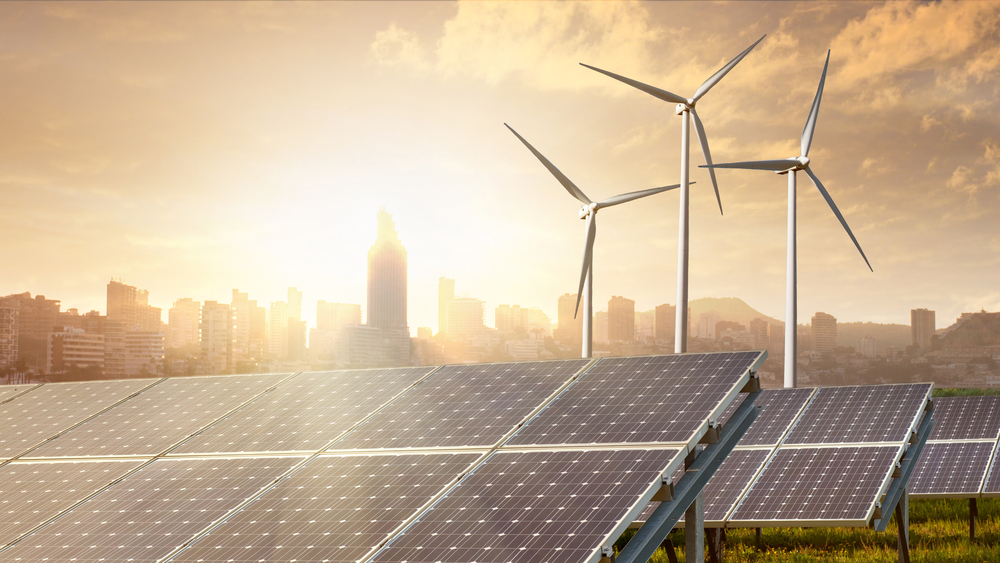2019 seen as banner year for advanced energy policy as governors embrace clean energy targets

Advanced Energy Economy (AEE), an association of business leaders focused on policies that support secure, clean and affordable energy, said many of the gains in advanced energy policy in 2019 were the result of the election of pro-clean energy governors across the country in Nov. 2018.
Eight new governors took office in January having pledged 100 percent clean or renewable energy. “Many of those new governors didn’t waste any time moving forward with a string of policy initiatives and executive actions to make their states get well on the way to 100 percent clean energy,” said J.R. Tolbert, managing director of state legislation for AEE, during a recent webinar on the year in review for advanced energy.
Today, 13 states plus Puerto Rico and D.C. have set 100 percent clean energy targets. And at least six investor-owned utilities operating in 12 additional states have committed to 100 percent clean energy on their own. “It was a strong start to the year and progress in the clean energy transition continues to move quickly and at a rapid pace,” Tolbert added.
Those states that have set a 100 percent clean energy goal through executive order or pledge include Washington, California, Nevada, New Mexico, Colorado, Wisconsin, Minnesota, Virginia, New Jersey, New York, Connecticut, Maine and Hawaii, according to AEE.
Another major win in January, AEE said, was when the Michigan Public Service Commission finished approval of a $10 million, three-year investment in an electric vehicle infrastructure pilot program for Consumers Energy, Michigan’s largest energy provider.
“The decision marked an important point in the development of not only the actual investment … in electric vehicle infrastructure but also an important moment in public policy development in the state,” said Matt Stansbury, managing director of electric transportation at AEE. The decision, which was made as part of a Consumers Energy rate case, resulted in investment in Level 2 charging in the residential space and multi-unit dwelling space, workplaces, and in public charging, and included some DC-fast charging investment for highway corridors and targeted customer education and outreach.
“It was an important moment in public policy investment in that state,” Stansbury said. Previously, a movement to implement an electric vehicle policy had been stalled in the state and it took more than two years of research for legislators to come back with a policy that could pass.
Among the other wins of the year, according to AEE, were:
• Movement in Nevada by Gov. Steve Sicolak to double the state’s renewable portfolio standard to 50 percent by 2030 and a bill that would revamp the state’s goals to be 100 percent carbon-free by 2050. Prior to then, former Gov. Brian Sandoval had vetoed the state’s renewable portfolio standard, which forced it to be placed on the ballot. Voters approved it in 2018, but Nevada’s constitution required that it also be signed by the governor.
• Legislation was blocked in Indiana that would have stopped the Indiana Utility Regulatory Commission from taking any action for 20 months on any new clean energy initiatives in the state, as well as any plans to shutter the state’s coal-fired energy plants by 2028.
• Bills passed in Colorado would reduce carbon emissions, and increase incentives to implement changes to utility infrastructure for electric vehicles. The legislature passed more than 13 energy bills. Those bills included changes to utility business model reform and changes to building codes to increase energy efficiency in construction.
Looking ahead, the group said 2020 could bring changes to the wholesale energy market in regards to the Federal Energy Regulatory Commission’s position on capacity market and pricing, as well as to changes to the Public Utility Regulatory Policies Act of 1978 or PURPA, including a possible roll-back of fixed energy prices in long-term PURPA contracts, and expanding sales to smaller markets.
In both the western and eastern halves of the country, AEE analysts said 2020 would likely bring more positive moves toward 100 percent clean energy. In the West, governors will begin working together to coordinate amongst the states.
“Very quickly, we’re seeing the policy alignment in the west – governors moving toward more ambitious policies – collaboration between the governors and creating a bigger regional market,” said Amisha Rai, managing director for the western states for AEE. “They will be moving in a positive direction and there is more appetite to have those conversations.”
Additionally, as has been the course for the past few years, analysts said the electric vehicle market would continue to grow across the country with pending legislative action in Pennsylvania, California and New York.
